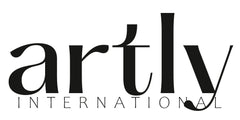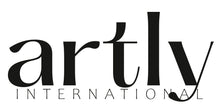TAD Talk: Insights From The Intersection of Art and AI

Art has always been a reflection of human creativity, an expression of emotions, ideas, and perspectives. Over the centuries, artists have utilized various tools, techniques, and technologies to push the boundaries of artistic expression. The interplay between art and technology has led to groundbreaking movements and innovations that have shaped the course of art history. In the 21st century, a new player has entered the scene: artificial intelligence (AI). The convergence of art and AI raises questions about the nature of creativity, the role of the artist, and the future of artistic practice.
In a recent TAD (The Art Discussion) Talk, hosted by J. Peeler Howell Fine Art, gallery owner and TCU graduate Peeler Howell, TCU art professor and artist Marshall Harris, local personality Brinton Payne, along with audience members, engaged in a stimulating discussion about the impact of AI in the art world. The dynamic discussion addressed the topic from different perspectives, prompting contemplation of various concepts.
The conversation found its genesis in one of Marshall Harris’s Facebook posts. Marshall used AI to generate an image just for fun, but it quickly sparked a lively discussion centered around how this new technology affects artists and authentic artistic processes. After seeing the post and flood of comments, the question arose to Peeler: "Where does the artificial end and the artist begin?" This question has gained particular relevance due to ongoing discussions like the writer's strike, and is one that resonates with those in many different creative fields, including visual arts.
While teaching a foundational drawing class at TCU, Marshall encountered the challenge of nurturing his students' imagination. Despite having access to a vast array of visual information, the students did not seem to be harnessing their imaginative capabilities. Harris decided to integrate AI-generated prompts into the class, illustrating the potential for AI to serve as a catalyst for creative exploration. One such prompt Harris uses as an example was, “Young girl, red hair, fall leaves blowing in the wind.” The following image was generated. The entire process took Harris less than 5 minutes. This integration of AI prompts raises intriguing questions about how AI might affect both studio and commercial artists.

In a demonstration at the talk, Harris pointed out that AI is not always accurate. In the prompt, “photograph of small child looking in full length mirror seeing reflection of his older self, dressed in t-shirt, shorts, sneakers, holding teddy bear, realism, bedroom, surprised, 2010 Rembrandt lighting, golden hour lighting, full body view,” a reflection in a mirror was turned backward, a teddy bear was missing a leg, and in another not all prompts were followed. While highlighting these limitations, Harris points out that AI drastically decreases conceptual and production time for the artist. Part of the artistic process, Harris points out, is that “the artist must know what to write in the prompt to get the desired image, the artist is still in control of the inspiration and concept.” AI then is used as a tool to reduce time and costs associated with designing a set, staging a composition, or hiring models.
Andrew Walker, Director of the Amon Carter Museum of American Art, was in attendance and asked, “How would you describe the decrease of production time in relation to your definition of creativity?” Harris emphasized that AI serves as an efficiency mechanism rather than a standalone creative force. The inspiration and conceptualization of ideas always originates from human artists. AI's role lies in aiding the execution of these ideas. Historical parallels were drawn to the evolution of art tools and techniques throughout history, from lenses and mirrors to camera obscura, all of which enabled artists to produce more refined and realistic works.
Brinton Payne emphasized the issue of copyright and ownership ethics as the dialogue progressed. The nuanced issue of intellectual property rights in the realm of AI-generated art was discussed. Questions arose about the ownership of the prompts that serve as the foundation for AI-generated works. As AI technology evolves, copyright law will inevitably need to adapt to address these new challenges.
The conversation also explored AI's impact on the job market within the art industry. While some fear that AI could lead to job displacement, it was posited that AI might simultaneously create new opportunities. For instance, young artists could specialize in generating prompts for AI, shaping a symbiotic relationship between human creativity and AI efficiency.
A significant portion of the discussion centered on the potential devaluation of art due to the instantaneous nature and focus on efficiency brought about by AI. Audience member Rebecca Motley shared, “I think it devalues art. I’m very concerned about this technology. You need to be raw as an artist. Take photography for example, some manipulate the photograph until the original is unrecognizable. You lose the rawness of the image captured in one place and time.”
Howell questioned, “I’m curious about what we might be losing in the studio process. For instance, Michelangelo took essentially a rejected piece of marble and carves away the pieces that are not ‘The David.’ Your CNC machine can scan and replicate it. Theoretically you could stand them side by side and not be able to tell the difference. So what is lost between those two examples of essentially the same end product?” Harris answered, “First, the inspiration around the original David is missing. AI never comes up with the original inspiration. Artists have been using efficiency mechanisms for centuries. In Michelangelo's time, it was assistants. Harris cautioned that “some artists may take advantage of this and use AI to remove as much of the hard work as possible and pass AI off as their own work. Some may apply a clear glaze to make it look like brushstrokes and there are lots of people who are going to buy something like this and think it’s original art.”
The role of consciousness in the artistic process was another theme that emerged. Participants questioned whether AI, despite its growing capabilities, could ever attain true consciousness and authenticity. Howell pointed out that “you can't prompt AI to teach you to make a mark about yourself – a personal mark that says something about the artist.” The emotional connection between an artist and the audience, the story behind the artwork, and the tactile experience of viewing it in person were all identified as aspects that remain distinctly human. Walker then asked Howell if that is the litmus test for authenticity. Howell responded, “I think the story behind the work lends a certain value. The work has aesthetic value on its own in composition and technical execution. The fact that there is a human hand behind the work along with the personal story leads to a genuine aesthetic experience for both the viewer and artist. There’s an exchange, a conversation between the artist and viewer that remains distinct from a viewer and AI.” He continues, “the distinction can be made that they are different in type. You can replicate Willie Nelson’s guitar, Trigger, but the replica wouldn’t carry the same significance.”

The conversation concluded on a note of open exploration. The participants acknowledged the potential benefits and challenges posed by AI in the art world. It was recognized that AI's role is evolving and that its impact on creativity and artistic expression is still unfolding. The participants emphasized the importance of not being overly judgmental about artists' choices, whether they embrace AI or follow traditional methods.
In essence, the conversation highlighted the complex interplay between AI and art. AI is undoubtedly transforming the artistic landscape by offering new tools and possibilities. However, the human element, including the artist's intention, emotions, and unique perspective, remains an integral and irreplaceable aspect of the creative process. As the art world navigates this technological revolution, the relationship between art and AI will continue to evolve, shaping the future of artistic expression in ways both anticipated and unforeseen.

(Cover image: AI generated image from Trisha Howell prompt. Fig. 1. AI generated image from Marshall Harris prompt. Fig. 2. Willie Nelson's guitar, "Trigger".)




Leave a comment